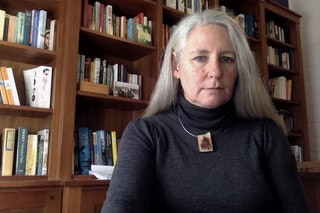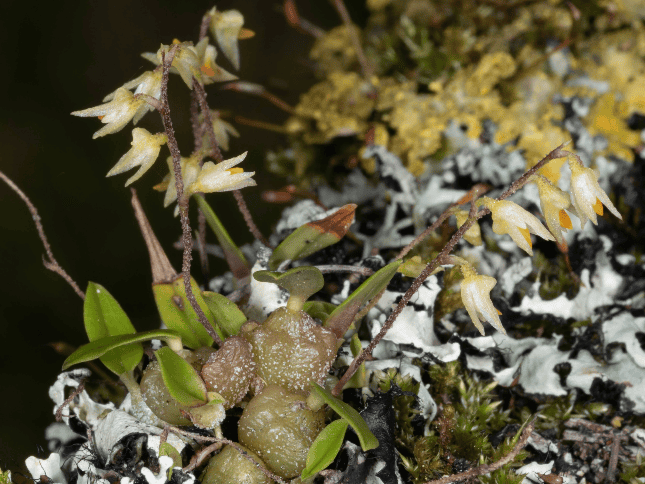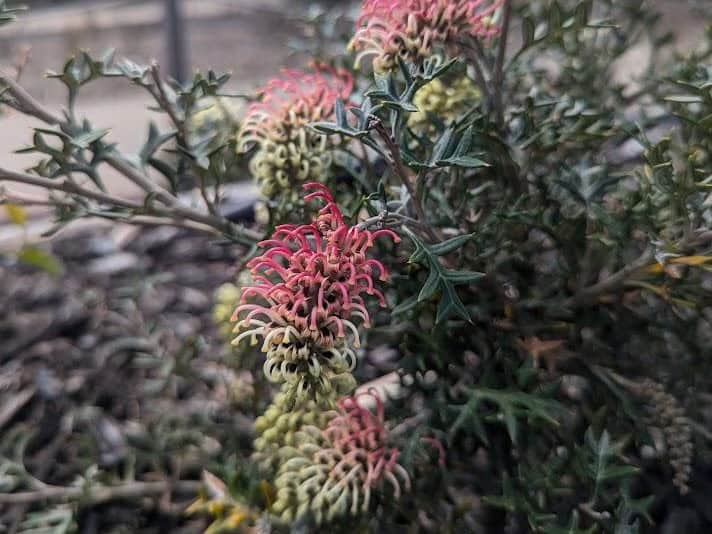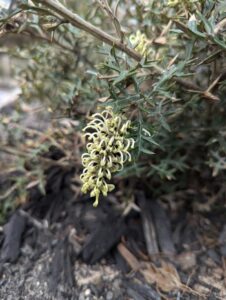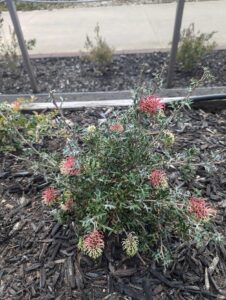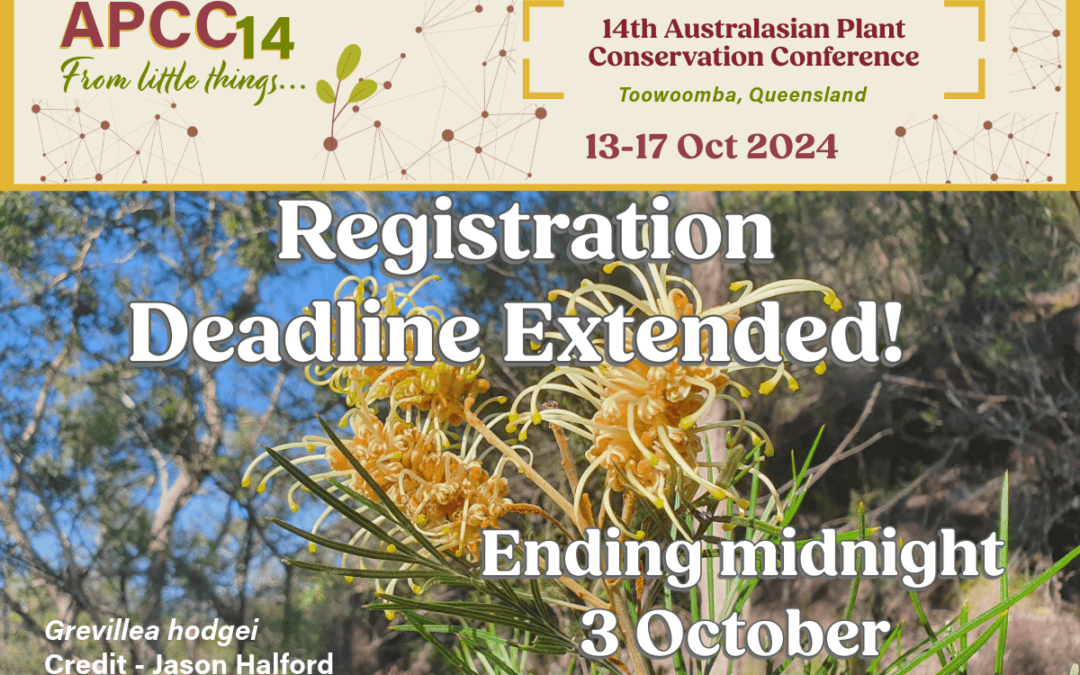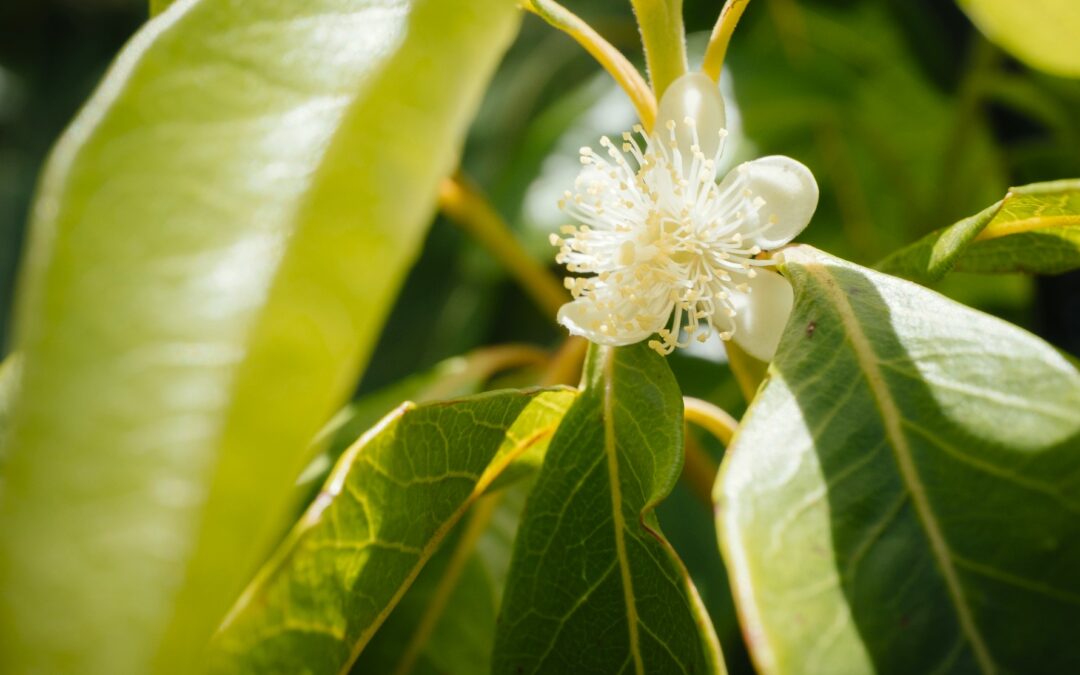
Jan 10, 2025 | News
Pip Walsh joined ANPC late last year as the Myrtle Rust Recovery Action Coordinator. Pip has over 30 years’ experience in the not-for-profit sector working in senior roles at WWF, Greening Australia and Bush Heritage. Since 2016 Pip has specialised in working with project teams to develop, implement and improve conservation and community projects using the Open Standards for Conservation.
Pip will head our new project funded by the Australian Government under the Saving Native Species program, which will coordinate recovery actions over 18 months for four Critically Endangered plants at risk of near-term extinction or serious decline due to the exotic fungal disease Myrtle Rust: Native Guava (Rhodomyrtus psidioides); Angle-stemmed Myrtle (Gossia gonoclada); Scrub Turpentine (Rhodamnia rubescens) and Smooth Scrub Turpentine (Rhodamnia maideniana). Click here to learn more about the project.
In her spare time Pip is a keen bushwalker, still potters around a soccer field and gets her hands dirty with Narrowneck Bushcare group.
This project is supported by funding from the Australian Government.


Jan 10, 2025 | News
New CSIRO research published in Phytotaxa investigating the Adelopetalum argyropus species complex has described 2 new species of orchid: A. howense and A. continentale. The ANPC supported fieldwork for the project in northeast NSW through San Diego Zoo Wildlife Alliance funding, resulting in the description of Adelopetalum continentale, as well as assessing the impact on the species following the 2019/20 fires. This was undertaken as part of our “Prevent rare plant extinction and reduce impacts of future fires” project.
CSIRO has produced a blog post describing the research, which was also conducted on Lord Howe and Norfolk Islands, with A. howense and A. argyropus described on those 2 islands respectively.
The full article describes the history of the taxonomy, as well as each of the species and their extent. You can read it over at: https://phytotaxa.mapress.com/pt/article/view/phytotaxa.678.1.9
Image: Adelopetalum continentale – Credit: Jeremy Bruhl

Dec 13, 2024 | News
As part of the The ‘Preventing the extinction of Victoria’s threatened flora’ project, horticulturists and scientist have been surveying for, collecting seed, and propagating the critically endangered Grevillea pachylostyla (Buchan River grevillea). These collections will form the basis of an insurance collection and seed orcharding program, safeguarding the future of this species. This elusive, sprawling shrub is known only from deep chasms and steep rocky outcrops in some of Victoria’s most remote alpine areas, making conservation efforts challenging.
This species can now be found in Royal Botanic Gardens Victoria’s conservation collections. The species’ conflorescences (compound flower stems) are cream coloured and gradually change colour to pinkish red as each individual flower reaches anthesis (opening).
Grevillea pachylostyla can be seen flowering now in the Research Garden and Stringybark Garden beds at Cranbourne Gardens—get in before it’s too late!


This research is funded by Department of Energy, Environment and Climate Action‘s Nature Fund.
The ‘Preventing the extinction of Victoria’s threatened flora’ project is led by Royal Botanic Gardens Victoria in partnership with La Trobe University, Australian Network for Plant Conservation, DEECA, Trust for Nature, Wimmera Catchment Management Authority, Nillumbik Shire, ENVITE, Bairnsdale & District Field Naturalists Club, Friends of the Grampians Gariwerd, WAMA Botanic Gardens, Halls Gap Botanic Gardens and the Australasian Native Orchid Society Victorian Branch.
Images Credit: Matthew Henderson

Oct 4, 2024 | Events Category, News
We’ve extended the virtual registration deadline until the end of next week (11 October) for anyone who would still like to watch the
APCC14 presentations streamed online.

Sep 27, 2024 | Events Category, News
Good news! Due to late demand we’re extending our registration deadline for APCC14! You can now register right up until the end of Thursday of next week (3 October).
Visit: https://www.anpc.asn.au/conferences-apcc14/ to learn more about the conference or view the draft program at: https://www.anpc.asn.au/conferences-apcc14/apcc14-program/
We have a wonderful line up of speakers which you can view over on our speakers page at: https://www.anpc.asn.au/conferences-apcc14/apcc14-speakers/
You can register here to attend in person
or here to attend online.
Don’t miss this opportunity to take part in our first ever conference in the sunshine state!

Sep 5, 2024 | News
Are you passionate about the conservation of our threatened native plants? Use your excellent interpersonal, communication and organisational skills to:
- work collaboratively with a diverse team of professionals to coordinate planning and delivery of a complex program.
- deliver a complex project/set of tasks in a timely manner, with minimal supervision, and work within strict deadlines.
- prepare communications materials for a broad range of audiences, including technical documents, reports to funding bodies, and communication documents for a general audience.
Location: to be negotiated (options include work from home office or possibly hosted by an appropriate organisation or agency, or a mix)
Salary etc: $75 per hour (includes leave loading) + 11.5% super. 27 hours/week for 18-month contract.
About the role: In this new position, you will coordinate recovery actions for four EPBC-listed Critically Endangered Myrtle Rust affected plant species: Rhodomyrtus psidioides (Native Guava); Gossia gonoclada (Angle-stemmed Myrtle); Rhodamnia rubescens (Scrub Turpentine) and Rhodamnia maideniana (Smooth Scrub Turpentine) through the formalisation of a current consortium, plus new partners, into a Recovery Coordination Team and:
- Facilitate agreement on, and coordinate delivery of, priority activities in the recovery program, through supporting effective operation of the Recovery Coordination Team.
- Identify resourcing needs and potential operational sources for these, and potential future partnerships, for ongoing progress (beyond life of this project) for recovery of the target species.
- Report on progress towards target species recovery and consolidation of working partnerships, concordant with relevant Australian Government reporting requirements for registered Recovery Teams.
- Provide secretariat support to the Recovery Coordination Team.
- Prepare and circulate communications updates for the Recovery Coordination Team, including recording and circulating meeting minutes, and recovery action program update for distribution to the broader stakeholder network. Assist the Chair in the preparation of other whole-of-program communications materials and documents as required.
- Maintain accurate records of team membership, actions and the progress status of actions.
- Facilitate internal and external consultation processes for the Recovery Coordination Team.
To be successful in this role, you will need a Bachelor’s degree or equivalent in natural sciences, advanced experience in threatened species management and recovery, demonstrated familiarity with fundamental documents on the Myrtle Rust problem and demonstrated understanding of issues and policies in plant conservation at species and ecological community level. A knowledge of plant conservation techniques and a willingness to travel and work flexibly to meet the needs of the program are also essential.
Background: Since its introduction to Australia in 2010, the exotic fungal disease Myrtle Rust has put 20-40 Myrtaceae species at risk of near-term extinction or serious decline. The Australian Network for Plant Conservation (ANPC) has played a key role in national Myrtle Rust matters since 2011, maintains a comprehensive information hub and was instrumental in developing the 2020 National Action Plan for Myrtle Rust (NAPMR) which is the action template for Myrtle Rust-affected species used by Commonwealth, States and researchers. The conservation path entails emergency germplasm capture, ex situ conservation, the selection of rust-tolerance traits, and eventual reinforcement or reintroduction of populations in the wild. Over the last 2 years, along with many partners including government departments and botanic gardens, the ANPC established a successful pilot dispersed-custody model for Native Guava with representative sampling and propagation of surviving wild germplasm, genetic management and communications/training activities, and commenced some actions for Scrub Turpentine.
Who we are: The Australian Network for Plant Conservation (ANPC) is a national not-for-profit organisation with a mission to ‘Promote and develop plant conservation in Australia ‘. We are a membership based organisation that’s been around since 1991. We work with a wide range of stakeholders including botanic gardens, local state and federal governments, research institutions, other NGOs, practitioners and community groups.
What we do: The ANPC brings people together (such as scientists, researchers, land managers, consultants, volunteers and students) from across Australia to collaborate, network and share information in an effort to conserve our native plant species and vegetation communities, prevent further extinctions and restore our natural areas and biodiversity. To achieve this we:
- hold training workshops, webinars and conferences.
- publish guidelines such as how to propagate and translocate threatened plants back into the wild.
- promote plant conservation and publish a quarterly journal Australasian Plant Conservation (APC).
- coordinate high priority projects with multiple stakeholders such as this project.
How to apply:
Your Expression of Interest should address the selection criteria in no more than 4 pages, and separately include your CV with the contact details for two referees.
Please send your Expression of Interest to the ANPC Business Manager by COB Friday, 20 September either via email: or by post to:
Australian Network for Plant Conservation
GPO Box 1777
Canberra ACT 2601.
For more information, please email one of the following ANPC management committee representatives:
- Caroline Gross
- Bob Makinson
